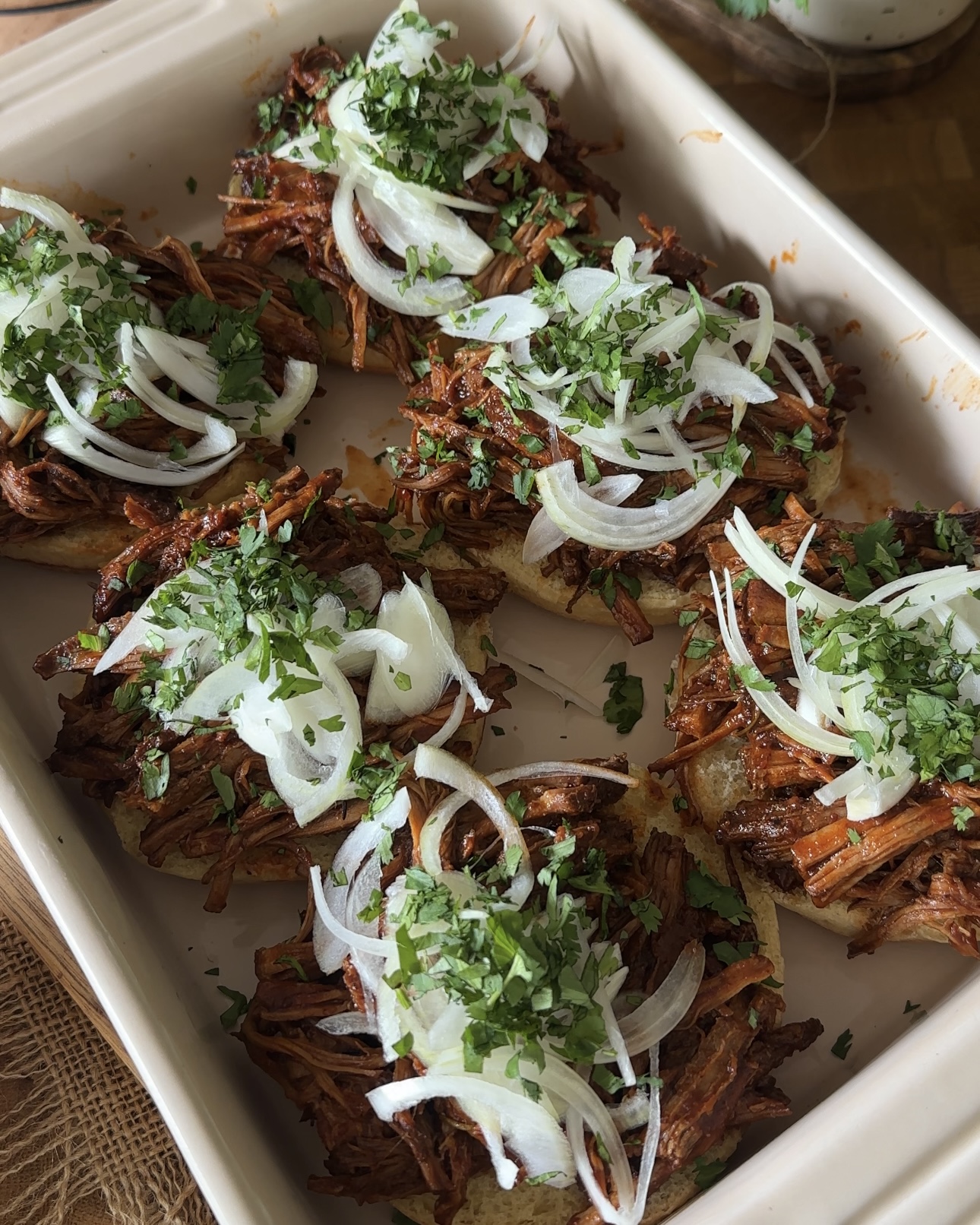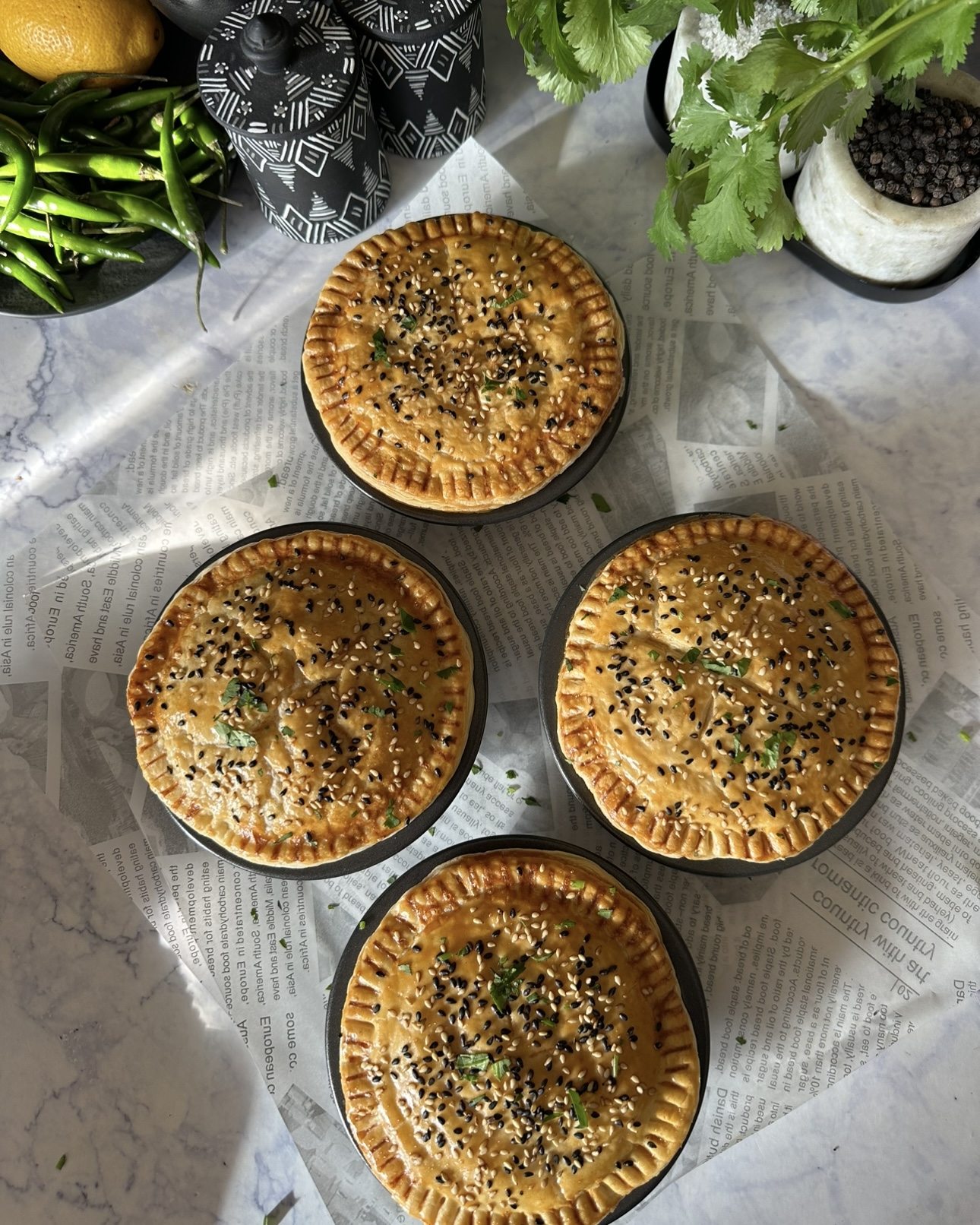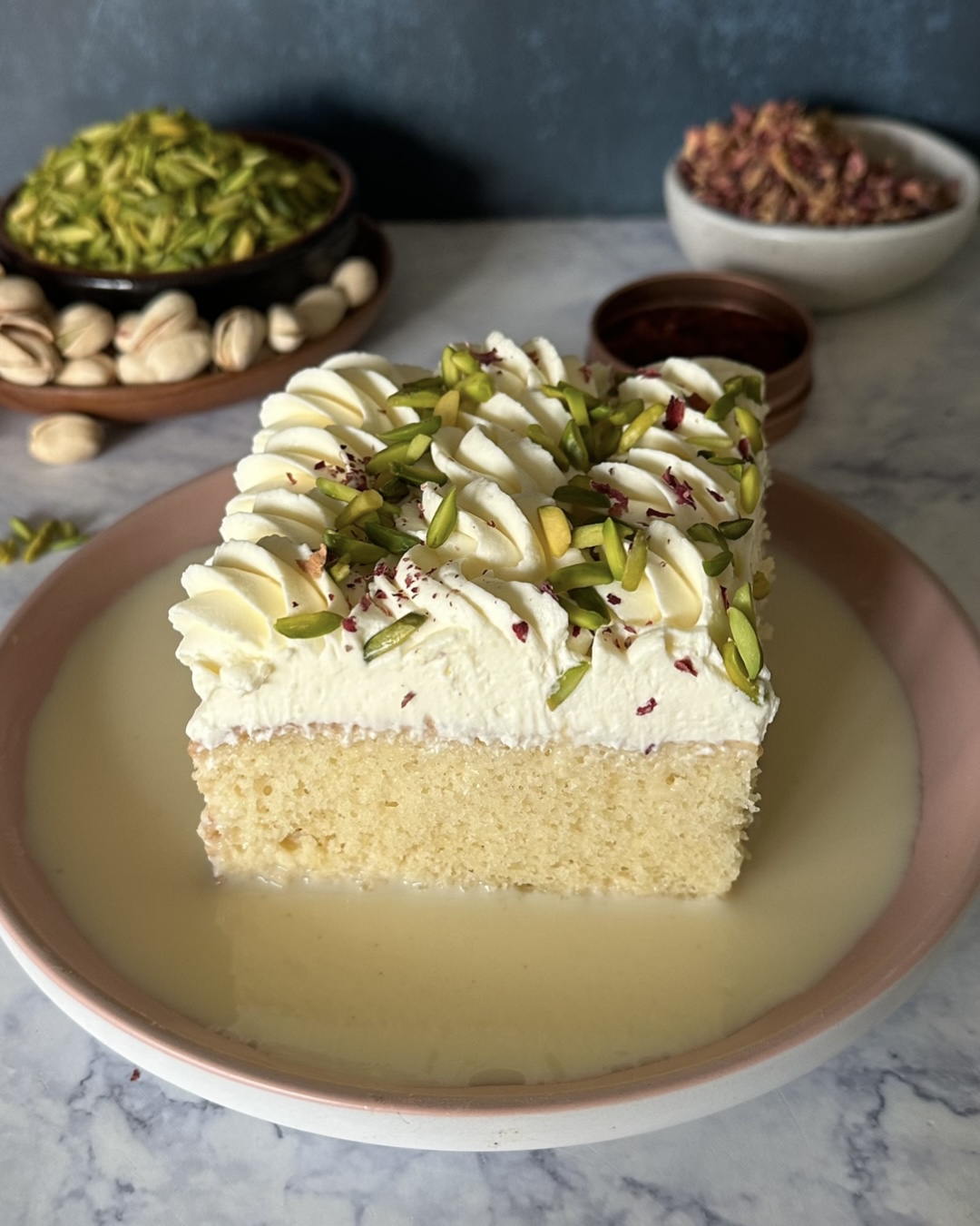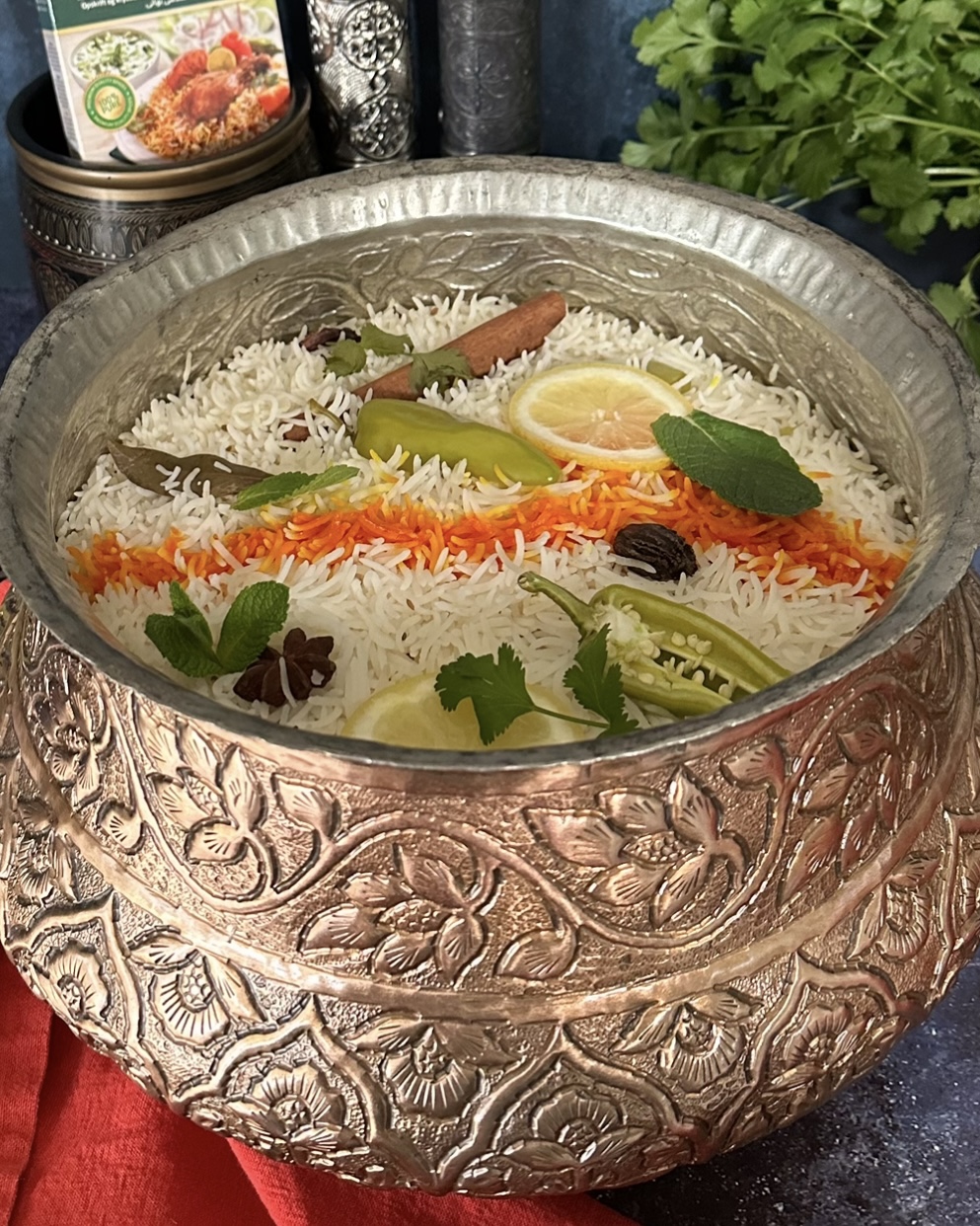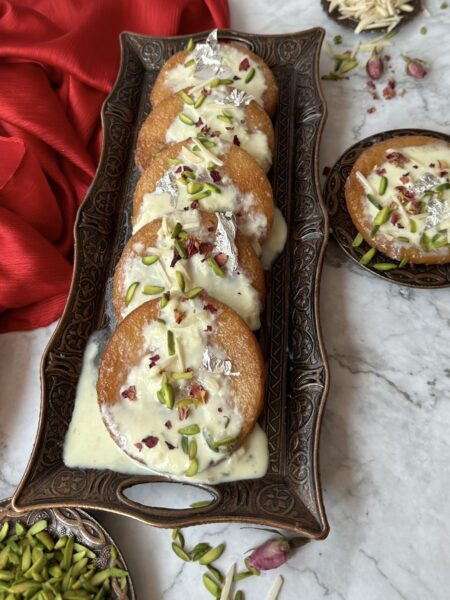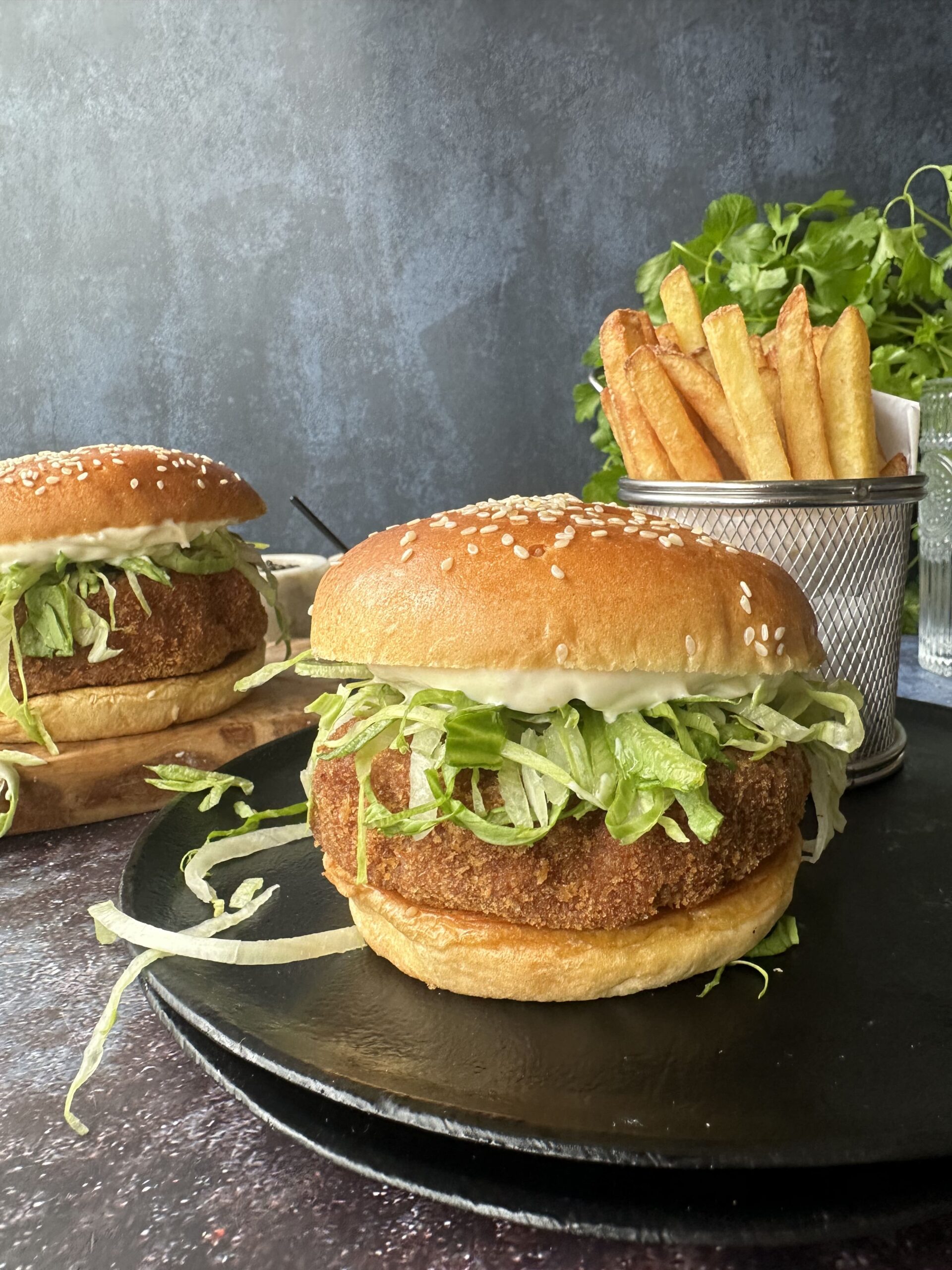Slow-roasted lamb leg to succulent perfection. The aromas alone are divine.
Prepare the Lamb
- Rinse the 2 kg lamb leg under cold running water to remove any residual blood or impurities.
- Ensure that the lamb is clean and ready for seasoning.
- Use paper towels to pat the lamb leg dry thoroughly. This helps the marinade stick better and improves browning during cooking.
- Using a sharp knife, carefully make deep gashes across the surface of the lamb leg. Aim for cuts about 1/2 inch deep and 2-3 inches apart. These gashes will allow the marinade to penetrate deeply into the meat, enhancing flavor and tenderness.
Make the Marinade
- In a large mixing bowl, add the following ingredients:
- 2 tablespoons salt
- 1 tablespoon chili powder
- 3 tablespoons chili paste
- 1 tablespoon black pepper
- 1 tablespoon mixed herbs
- 2 tablespoons ginger garlic paste
- 4 tablespoons yogurt
- 4 tablespoons lemon juice
- 1/4 cup olive oil
- Use a whisk or fork to combine all the marinade ingredients until you have a smooth and well-blended mixture. Make sure there are no lumps and the spices are evenly distributed.
Marinate the Lamb
- Pour the marinade over the lamb leg. Use your hands (wearing disposable gloves if preferred) to rub the marinade all over the lamb, ensuring it gets into the gashes and covers the entire surface evenly.
- Wrap the marinated lamb leg tightly in plastic wrap or place it in a sealed container. Refrigerate for a minimum of 24 hours. For best results, marinate for up to 48 hours to allow the flavors to develop fully.
Prepare for Roasting
- About 30 minutes before you plan to cook, preheat your oven to 150°C (300°F). This low temperature is ideal for slow cooking.
- Slice 3 medium onions into thin rounds. Spread the onion slices evenly across the bottom of a large roasting tray. The onions will provide flavor and act as a bed for the lamb leg.
- Place a wire rack on top of the onions in the roasting tray. This will elevate the lamb leg, allowing heat to circulate evenly and preventing it from sitting in the liquid.
- Carefully position the marinated lamb leg on the wire rack. This helps the lamb cook evenly while allowing any drippings to infuse the onions below.
- Pour 2 cups of meat broth into the roasting tray around the lamb leg, being cautious not to wash off the marinade. The broth will keep the meat moist and add flavor during cooking.
- Tightly cover the roasting tray with aluminum foil. Ensure it is sealed well to trap moisture inside, which is crucial for tender, succulent lamb.
Roast the Lamb
- Place the covered roasting tray in the preheated oven. Cook the lamb for 4 to 6 hours, depending on the size of the leg and your desired tenderness. A longer cooking time results in more tender meat.
- After the first hour, carefully remove the tray from the oven. Remove the foil and use a basting brush or spoon to baste the lamb with the juices from the tray. This enhances the flavor and keeps the meat moist.
- Cover the tray again and return it to the oven. Repeat this basting process every hour during cooking.
- After the total cooking time, check the lamb for tenderness. It should be fork-tender and easily pull apart. If it’s not tender enough, cover it again and cook for an additional 30 minutes to 1 hour.
Rest the Lamb
- Once the lamb is done, take it out of the oven and remove the foil. Let the lamb rest for about 20 minutes. This resting period allows the juices to redistribute throughout the meat.
Broil for Crispiness (Optional)
- If you prefer a crispy exterior, after resting, place the lamb leg under the broiler for 10 minutes. Keep a close eye on it to avoid burning, and turn it as needed for even browning.
Make the Gravy
- While the lamb is resting, take the broth and drippings from the roasting tray and pour them into a saucepan.
- Bring the broth to a boil over medium heat. Use an immersion blender or a regular blender to blend the broth until smooth. This will create a rich and flavorful base for your gravy.
- In a small bowl, prepare the cornflour slurry by mixing 3 tablespoons of cornflour with water until smooth.
- Gradually pour the cornflour slurry into the boiling broth while stirring continuously. This will help thicken the gravy. Adjust the thickness according to your preference by adding more water or broth if needed.
Serve
- After the resting period, carve the lamb leg into slices or chunks, depending on your preference.
- Arrange the sliced lamb on a serving platter. Garnish with lemon slices and chopped coriander for a fresh touch.
- Serve the rich gravy on the side or drizzled over the lamb.
Serving Suggestions
- Serve with saffron or turmeric-infused rice to complement the rich flavors of the lamb.
- A refreshing salad made with cucumbers, tomatoes, and a tangy lemon dressing can balance the richness of the lamb.
- Warm naan or pita bread provides a wonderful way to enjoy the tender meat and gravy.
- Pair your meal with traditional drinks like mint lemonade, rose water-infused beverages, or yogurt drinks (lassi) for a refreshing contrast to the rich lamb.
- About 30 minutes before you plan to cook, preheat your oven to 150°C (300°F). This low temperature is ideal for slow cooking.
- Slice 3 medium onions into thin rounds. Spread the onion slices evenly across the bottom of a large roasting tray. The onions will provide flavor and act as a bed for the lamb leg.
- Place a wire rack on top of the onions in the roasting tray. This will elevate the lamb leg, allowing heat to circulate evenly and preventing it from sitting in the liquid.
- Carefully position the marinated lamb leg on the wire rack. This helps the lamb cook evenly while allowing any drippings to infuse the onions below.
- Pour 2 cups of meat broth into the roasting tray around the lamb leg, being cautious not to wash off the marinade. The broth will keep the meat moist and add flavor during cooking.
- Tightly cover the roasting tray with aluminum foil. Ensure it is sealed well to trap moisture inside, which is crucial for tender, succulent lamb.
SLOW COOKED LAMB LEG
Feasting with Flavor: Slow-Cooked Lamb Leg,This tender, succulent dish is marinated with a blend of aromatic spices, yogurt, and fresh lemon juice, ensuring every bite is bursting with flavor.
With minimal prep time and the convenience of marinating ahead, this recipe allows you to enjoy a stress-free cooking experience. The lamb is slow-roasted to perfection, resting on a bed of caramelized onions, and paired with a savory gravy that elevates the dish to new heights.
Whether you're gathering with family or hosting friends, this lamb leg is sure to impress your guests. Serve it alongside fragrant rice or warm bread, and don’t forget to garnish with fresh lemon slices and chopped coriander for that extra touch.
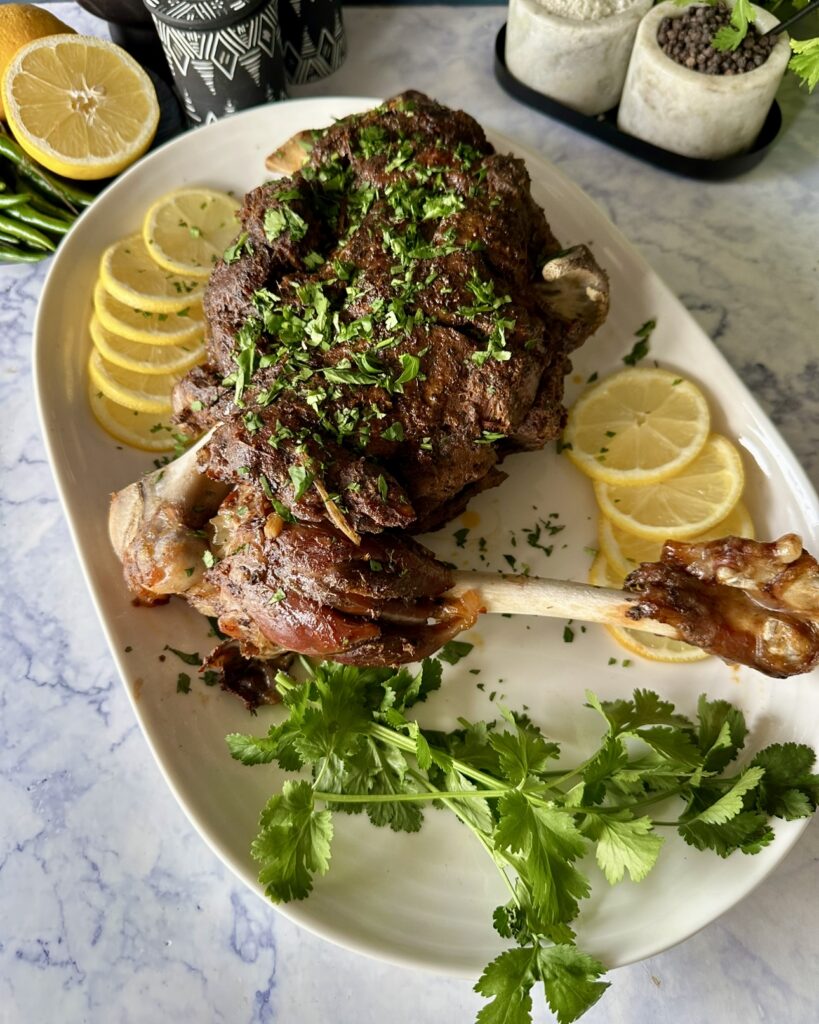
Ingredients
2 kg lamb leg
Instructions
-
- Wash the lamb leg thoroughly under cold water and pat it dry with paper towels.
-
- Using a sharp knife, make deep gashes (about 2-3 inches apart) across the surface of the lamb. This will help the marinade penetrate the meat and enhance its flavor.
-
- In a large bowl, combine the following ingredients:salt, chili powder, black pepper, mixed herbs, chili paste, ginger garlic paste, yogurt, lemon juice, olive oil.
-
- Mix the marinade well until all the ingredients are fully incorporated.
-
- Pour the marinade over the lamb leg, making sure to cover it completely.
-
- Rub the marinade into the meat, ensuring it gets into the gashes you created.
-
- Cover the lamb with plastic wrap or place it in a sealed container and refrigerate. Allow it to marinate for a minimum of 24 hours for the best flavor.
-
- After marinating, preheat your oven to low heat (around 150°C / 300°F).
-
- Slice the onions and spread them evenly across the bottom of a roasting tray.
-
- Place a wire rack on top of the onions, then set the marinated lamb leg on the rack.
-
- Pour the meat broth into the roasting tray around the lamb, being careful not to wash off the marinade.
-
- Cover the tray tightly with aluminum foil to retain moisture during cooking.
-
- Place the covered roasting tray in the preheated oven. Cook the lamb for 4 to 6 hours, depending on your desired tenderness.
-
- After the first hour, remove the tray from the oven and baste the lamb with the juices in the tray. Repeat this process every hour to ensure maximum flavor.
-
- After the cooking time is complete, check the lamb. It should be completely tender and easily pull apart with a fork.
-
- Remove the lamb leg from the oven and let it rest for 20 minutes. This allows the flavors to meld and makes it easier to carve.
-
- If you prefer a crispier texture on the outside, broil the lamb for an additional 10 minutes after resting.
-
- While the lamb is resting, take the broth from the roasting tray and pour it into a saucepan. Bring it to a boil.
-
- Blend the broth using an immersion blender or regular blender until smooth.
-
- Stir in the cornflour slurry and mix continuously until the gravy reaches your desired consistency.
-
- Carve the lamb leg and serve it on a platter, garnished with lemon slices and chopped coriander.
-
- Pour the rich gravy over the lamb or serve it on the side.
Nutrition Facts
Servings 6
- Amount Per Serving
- Calories 137.36kcal
- % Daily Value *
- Total Fat 9.89g16%
- Saturated Fat 1.57g8%
- Cholesterol 1.32mg1%
- Sodium 411.3mg18%
- Potassium 218.42mg7%
- Total Carbohydrate 12.07g5%
- Dietary Fiber 2.25g9%
- Sugars 3.43g
- Protein 1.9g4%
- Vitamin A 28.39 IU
- Vitamin C 11.63 mg
- Calcium 57.58 mg
- Iron 1.48 mg
- Vitamin D 0.01 IU
- Vitamin E 1.92 IU
- Vitamin K 18.36 mcg
- Thiamin 0.09 mg
- Riboflavin 0.08 mg
- Niacin 0.7 mg
- Vitamin B6 0.17 mg
- Folate 17.36 mcg
- Vitamin B12 0.03 mcg
- Phosphorus 47.52 mg
- Magnesium 18.19 mg
- Zinc 0.37 mg
* Percent Daily Values are based on a 2,000 calorie diet. Your daily value may be higher or lower depending on your calorie needs.
Note
- If you can, let the lamb marinate for 48 hours. This extra time allows the flavors to deepen and the meat to become even more tender.
- Regularly baste the lamb during cooking to keep it moist and enhance its flavor. Use a baster or spoon to drizzle the cooking juices over the meat.
- Don’t skip the resting period after cooking! This step is crucial as it allows the juices to redistribute throughout the meat, ensuring that it stays juicy when sliced.
- Adjust the thickness of your gravy to your preference. If you prefer it thicker, add a little more cornflour slurry, and if you like it thinner, add more broth or water.
Different slow-cooking methods:
1.Slow Braising:
- Braising involves searing the lamb leg first to develop a rich, browned crust, then cooking it slowly in a liquid (like broth) in a covered pot or Dutch oven.
- This method is excellent for infusing the lamb with deep, complex flavors.
- You can add root vegetables like carrots, potatoes, and celery to the braising liquid, which will cook alongside the lamb and absorb the flavors.
2. Slow Cooking in a Crock-Pot/Slow Cooker:
- This is a hands-off approach that allows the lamb to cook slowly and evenly over several hours.
- You can adapt the marinade from the original recipe and add everything in the same pot.
- The slow cooker's gentle heat ensures that the lamb becomes incredibly tender and moist.
3.Smoked Slow Cooked Lamb Leg:
- Using a smoker, the lamb leg can be slow cooked over many hours, infusing the meat with a wonderful smokey flavor.
- Wood chips, such as hickory, or mesquite add wonderful layers of flavor.
4.Stovetop;
- Heat a little oil in your Dutch oven or heavy-bottomed pot over medium-high heat.
- Sear the lamb leg on all sides until it's browned. This step adds depth of flavor.
- Remove the lamb leg from the pot.
- Add aromatics like onions, garlic, carrots, and celery to the pot and sauté until softened.
- Pour in your liquid broth to partially submerge the lamb leg.
- Return the lamb leg to the pot.
- Bring the liquid to a simmer, then reduce the heat to low.
- Cover the pot tightly with the lid.
- Simmer the lamb leg for several hours, until it's fork-tender. This can take 3-4 hours or even longer, depending on the size of the leg.




